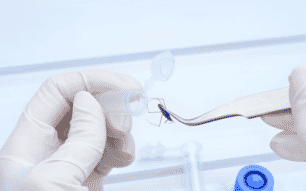In Tokyo, slices of buri, or Japanese amberjack, line the shelves at Ito-Yokado, one of Japan's major supermarket chains. But these are not your standard amberjack fillets; they are odourless amberjack developed by Professor Masahiko Ariji at Kindai University, famous for its work in culturing bluefin tuna.
Professor Ariji and his colleagues spent five years developing and commercialising odour-free amberjack. In January 2016, they began selling the fish to retailers after teaming up with a university-affiliated wholesaler.
The secret to odourless amberjack lies in the feed. Ordinary feed for farmed fish tends to be 40-60 per cent fishmeal, or ground dried fish and bones with plenty of proteins that are essential for growth.
But making fishmeal generates odours, and the substances in the vapour from fish handling and processing operations, such as fishmeal manufacturing, can be odorous even when present in low concentrations. The problem of odorous raw material becomes more acute in places such as fishmeal factories where large quantities are handled and stored, while vapour from cookers, presses and screens can also make a significant contribution.
Professor Ariji's team changed the diet of their amberjack by reducing the ratio of fishmeal to 28 per cent. They made up the difference with other alternatives such as soybean meal and other vegetable proteins that were mixed together with chicken meal. This created a savoury taste, and green tea powder was also used to remove the fishy smell.
Consumers tend to avoid fish that require different cooking methods to remove smells. Meanwhile the per capita consumption of seafood in Japan is falling. In May 2016, a government report showed that the total per capita marine food consumption in the year through March 2016 had gone down to 27.3 kg, 30 per cent down from a peak of 40.2 kg in fiscal 2001. This spurred Professor Ariji and his colleagues to begin their research. They started with amberjack, the most farmed fish in Japan.
They also worked with a private company to create a special vacuum packaging design to prevent oxidation, which can also cause odours. Professor Ariji hopes his work will help to increase amberjack exports and draw the attention of overseas consumers who may be more sensitive to fish smells compared to the Japanese. He and his team were delighted with a recent tasting event in Osaka, where amberjack were lightly seasoned with sauce and served with rice. The fish was a huge hit with participants.
Meanwhile in western Japan, fish raised on feed mixed with citrus and other fruit have been hitting the market. Sakai city near Osaka has been selling mikan buri or orange amberjack since 2012 at conveyor belt sushi restaurants, and believes that the clean aftertaste is a huge selling point. The fish are raised on feed mixed with the peel and juice of mikan oranges. Other species on offer include mikan salmon and sudachi citrus white trevally, depending on the season.
Fruit fish is the work of Associate Professor Haruhisa Fukada, who specialises in fish nutritional physiology at Kochi University. While researching the antioxidative effects of polyphenol in yuzu citrus fruit, Professor Fukada found that when the fruit was added to fish feed, he could control any changes in colour to the fish meat.
He also found the fish retained a yuzu flavour. Yuzu-flavoured amberjack hit the market in 2007 after Professor Fukada began working with a local fishermen's cooperative.
Fruit-flavoured amberjack are raised on feed that contains about 10 per cent of yuzu peel and juice. The feed raises the concentration of limonene, a substance responsible for the aroma of citrus fruit, to 20 times larger than the minimum level humans can smell. As of last December, at least 23 types of fruit fish had been cultivated in eight prefectures across Japan.
"If artificial farming techniques can help create more tasty fish, the value of cultured fish will rise and the fisheries industry will be revitalised," said Professor Fukada. "It would be great to see fruit fish being enjoyed by those who normally don't like seafood."
Other fish farmers in Japan are also throwing their hats into the ring. In Kagawa prefecture on the island of Shikoku, farmers are grinding olive tree leaves into a powder and mixing it into feed pellets given to hamachi or yellowtail. The fish are given the pellets for just over two weeks.
Olives add flavour, a high amount of Vitamin E and reduce any unpleasant odours. In Nagasaki prefecture, southern Japan, farmed mackerel are given nutmeg, oregano, cinnamon and ginger so their meat becomes more fragrant.
Fruit and herb flavoured fish are still only a small fraction of all farmed fish but producers hope that the distinct flavours and aromas of their products will draw attention at home and abroad.




